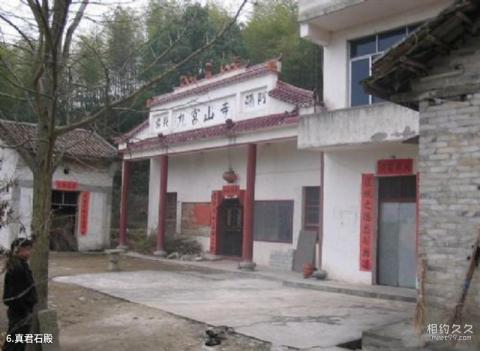
Introduction to the Zhenjun Stone Palace: The Zhenjun Stone Palace was built in the Jiading Year of the Southern Song Dynasty (1210), 780 years ago. It has been awarded the title of six emperors. Next to the Shengshi Palace, there are Ruiqing Palace, Wanshou Palace, Chenglu Palace, Jiuyi Palace, Taiyin Palace, Taiyang Palace and other palaces. On the mountain, Wangxian Palace and Xunye Palace have all been repaired and destroyed, and now only the Stone Palace remains. .
The Zhenjun Stone Palace is a granite hexagonal building, seven meters high, divided into three levels. "The stone eaves stand upright, and the golden gate is iron tiled." It is topped by a gourd-shaped iron roof weighing a thousand kilograms, with rough and simple carvings. The door of the palace hangs with the inscription "Zhen Mu Tang" written by Emperor Ning Zong. Outside the door is the "Ruiqing Palace", with Qingdu Pavilion, Zifu Pavilion and Taiyin and Taiyang Palaces on the left and right. Outside Ruiqing Palace, there is a flat pot platform downgraded five steps. A stone square is built in Taichung, with a plaque "Edict to build Qintian Ruiqing Palace" hanging high, decorated with coiled dragons and flying phoenixes.
Other Taoist relics on the mountain include two stone plaques of "Edict to Build Qintian Ruiqing Palace" and a stone plaque of "Wanshou Palace" during the Wanli and Kangxi years of the Ming Dynasty.
